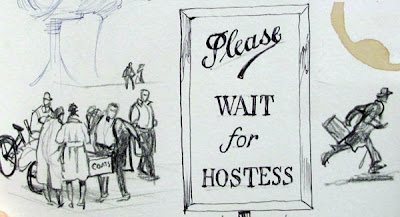The pigment, called eumelanin, is what gives color to hair and eyes in most animals, including humans.
The new technique shows features not apparent in the recent discoveries of melanosomes-- pigment producing structures which implied certain coloration patterns. These new findings are based on X-ray evidence of the pigments themselves, not just the pigment-producing structures.
This is exciting news for dinosaur watchers. So much of our identification of modern birds is based on the way they are colored. It’s as if a few pages of our Field Guide to the Dinosaurs suddenly morphed from x-rays to full-color plates.
The new technique shows features not apparent in the recent discoveries of melanosomes-- pigment producing structures which implied certain coloration patterns. These new findings are based on X-ray evidence of the pigments themselves, not just the pigment-producing structures.
This is exciting news for dinosaur watchers. So much of our identification of modern birds is based on the way they are colored. It’s as if a few pages of our Field Guide to the Dinosaurs suddenly morphed from x-rays to full-color plates.
X-Rays Illuminate Fossil Pigment (Nature News)









































